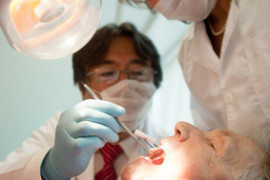Oral pathogens contribute significantly to oxidative stress, according to recent research undertaken at the University of Valencia.
Oxidative stress occurs when the body is unable to counteract free radicals with antioxidants. In addition to periodontal disease, oxidative stress has been linked to cancers, inflammatory diseases like atherosclerosis, and neurodegenerative diseases like Alzheimer’s disease.
In the study, 86 individuals with healthy mouths, gingivitis, and periodontal disease were examined for clinical parameters: bleeding on probing, pocket depth, clinical attachment loss, and bacterial plaque. Researchers then tested their saliva for oxidative stress parameters and took samples of subgingival plaque.
Their results confirm what many other studies have suggested: that periodontal disease is associated with oxidative stress. But what is significant about this research is the finding that specific bacteria played a key role in the severity of oxidative stress.
“The presence of these four bacteria types [P. gingivalis, A. actinomycetemcomitans, T. denticola, and T. forsythia], separately, increases oxidative stress levels to varying degrees. The combination of three bacterial types (red complex) produced significantly high levels of oxidative stress.”
Another study published earlier this year found that when the body is experiencing oxidative stress, it is less able to ward off periodontal infection. Patients with chronic periodontitis were found to have a “deficient oxidative stress response.”
And this most recent study explains why. Patients with severe periodontal disease are often dealing with a polymicrobial infection that likely includes most if not all of the bacteria mentioned in this study. Each of these pathogens is known to contribute to damage in the mouth and throughout the body on their own, but when they work together, they can do even more damage.
Being able to quantify and monitor patients’ oral microbial burden is an important tool for healthcare professionals to have in their arsenal. From diet and nutrition to sleep health; from stress management to disease prevention, the mouth and its microbiome play an important part in every aspect of our lives. Thanks to research like this, which defines periodontal status by more than clinical visual signs, oral-systemic health professionals have never had a better opportunity to significantly impact the overall health of their patients.



